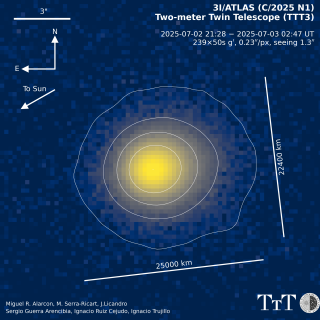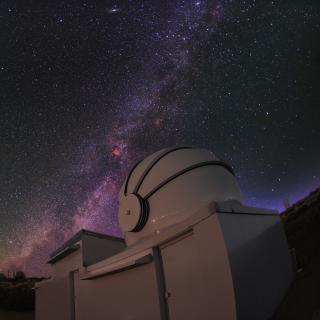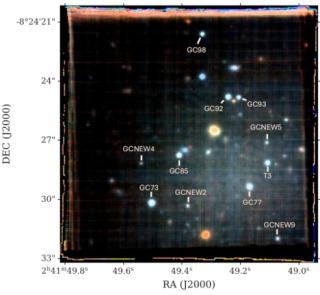Earlier this year, a team of astrophysicists has revealed new insights on an ancient collision that our galaxy the Milky Way underwent with another smaller galaxy called Gaia-Enceladus early in its history. However the details on how and when that collision happened are not precisely known. The study of a single bright star called nu Indi, for which data from the NASA mission TESS (Transiting Exoplanet Survey Satellite), the ESA Gaia mission, and ground-based observations were combined, led to better characterize this event. Indeed, by applying a novel approach based on asteroseismology analysis, which is the study of seismic waves in stars, the age of nu Indi was precisely determined while it was shown that its trajectory was affected by the Gaia-Enceladus collision. This study opened a window on the better understanding of such collisions between galaxies.
A snapshot from TESS of part of the southern sky showing the location of ν Indi (blue circle), the Milky Way plane (bottom left) and the southern ecliptic pole (top). These come from TESS data in sectors 1, 12 and 13 Credit: J. T. Mackereth.
Advertised on
Authors
W. J. Chaplin et al.
References




